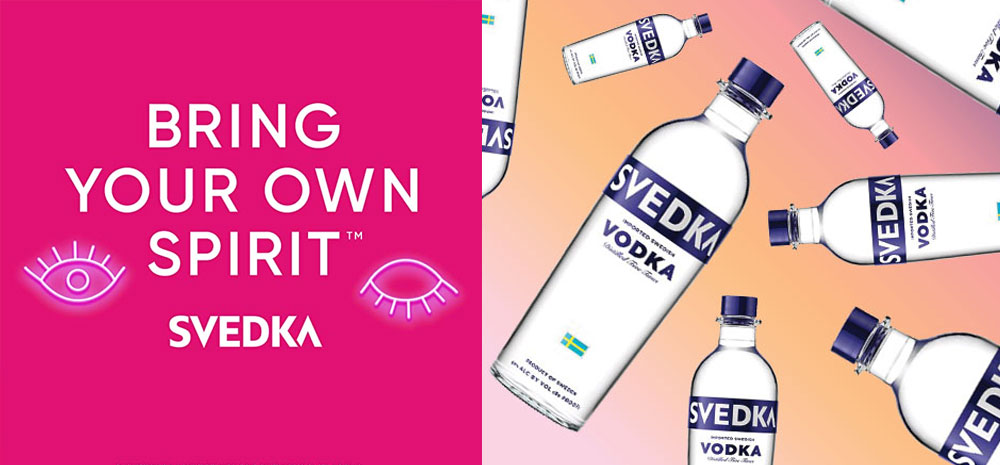VODKA
Vodka is Russian for “water”.
It is an international drink today and is made throughout the world, including TEXAS!
VODKA History / Production
In Russia there is a dramatic variation in the production of grain and root crops from year to year, vodka is produced there from any surpluses. Potatoes and rye are the most available crop for production. The two crops named tend to produce disagreeable flavors that need to be disguised. Russian vodka’s are flavored to tone done the roughness and disagreeable flavors. Peach and cherry-flavored are therefore to be found. The Polish “Zubrowska (Buffalo) vodka is famous for its green color and the flavor of coarse grass which feeds the buffalo.
The vodkas made in the United States, United Kingdom, Germany and elsewhere are entirely colorless, tasteless and odorless. They may be made from cane spirit as well as from grain crops , potatoes and beets. Vodka is made like a whiskey. In distillation, whiskey is taken off the still at relatively low proof (125-140 proof) while it retains the flavor congeners that identify it. By contrast, vodka is distilled at high proof to extract the flavor congeners. By the United States standards, vodka is neutral spirits (minimum 190 proof) with special attributes. It is distilled or treated after distillation with charcoal “or other material” to achieve its tasteless, colorless, colorless character. Vodka is not aged.
Flavored Vodka
Flavored vodkas aren’t exactly new. Russians and Poles have made vodka in flavors such as okhotnichya (“hunter’s vodka,” flavored with clove, ginger and other spices) and zubrowka (bison grass) for centuries. Phillips Distilling Co. made colored cherry and lime vodkas in the 1950s, and the 1980s brought Absolut Peppar and Stolichnaya Limonnaya into local bars.
What is new in flavored vodkas is the abundance of choice. In the past five years, 115 new flavored vodkas have been introduced, according to the Distilled Spirits Council of the United States (DISCUS).
The four most popular vodka flavors are lemon, orange, raspberry and vanilla, according to Adams Beverage Group, a market research firm. But there’s much more out there.
For an interesting variation on a Moscow Mule, try berry vodka with ginger beer and lime juice over ice.
For those with a sweet tooth, try mixing vanilla vodka and orange vodka with soda water, over ice, for a Creamsicle taste with a grown-up kick.
The differences among flavored vodkas go deeper than, well, flavor. Each distiller has a slightly different production method. The base alcohol can be made from wheat, rye, corn, potatoes, sugarcane or anything else that yields starch, distilled in an old-fashioned pot still or an efficient column still.
The pot-still method produces vodka with more residual flavor left over from the base ingredients. It’s harder to maintain consistency among batches with this process, but pot stills can create intense, saturated fruit flavor.
The column still produces a cleaner, more neutral-tasting vodka with less flavor variation from bottle to bottle. When used as a base, column-distilled vodka doesn’t compete with added flavors.
Distillers add either purchased flavorings, made with real fruit oils, essences or synthetic blends, or flavors extracted from fresh ingredients. Often, distillers add sweeteners, which lower the final product’s proof. At family-owned Domaine Charbay, it’s all about the fruit. Thirteenth-generation distiller Karakasevic starts with “the freshest fruit possible, less than three days from the tree to the distillery.”
Meyer lemons and blood oranges from Porterville (Tulare County), Rio Star grapefruit from Mercedes, Texas, and key limes from Florida and Veracruz, Mexico are shredded and put through a six-month extraction process, then integrated with Charbay’s four-time column-distilled corn, wheat and rye vodka.
“Everyone’s coming out with flavored vodkas,” Karakasevic says. “We produce a superior product. We make it by hand.”
Hangar One distiller Jorg Rupf agrees that fresh fruit is crucial. “The big boys,” he says, “they get their flavors from flavoring companies. What they buy might have natural flavors, but the taste doesn’t have the whole spectrum of the fruit.”
As the owner of St. George Spirits, Rupf made award-winning eaux-de-vie — fruit brandies — for more than 20 years. When he created Hangar One with Ansley Coale, co-founder of brandy producer Germain-Robin, he applied the eau-de-vie process to vodka production.
Rupf infuses a neutral Midwestern wheat vodka with fresh ingredients, such as red raspberries and kaffir limes, for two to four weeks before re- distilling the vodka in a pot still. He blends some of the original infused fruit batch, kept in reserve, with the twice-distilled product for extra texture.
Monsell Darville, spokesman for the French vodka Grey Goose, places chief importance on the five-times column-distilled base vodka, made using wheat from Beauce and spring water from Massif Central mountains.
“It’s very important to us that we have these ingredients,” says Darville, “because this is where the magic begins.”
The company also extracts its own fresh flavors, he adds, blending them back into the base vodka over a period of weeks.
Stolichnaya flavored vodkas depend on the quality of the base vodka, too, according to Steven Wright, whose title at Allied-Domecq Spirits North America is Liquid Innovation Director. The wheat vodka is column-distilled three times and filtered through quartz and Siberian birch charcoal before the addition of natural flavors — developed with a flavor designer — and a small amount of sweetener.
Buy a bottle? Infuse your own? Drink it straight? Stick to cocktails? With flavored vodka right now, the choice — lots of choice — is all yours.
(from: San Francisco Chronicle)








